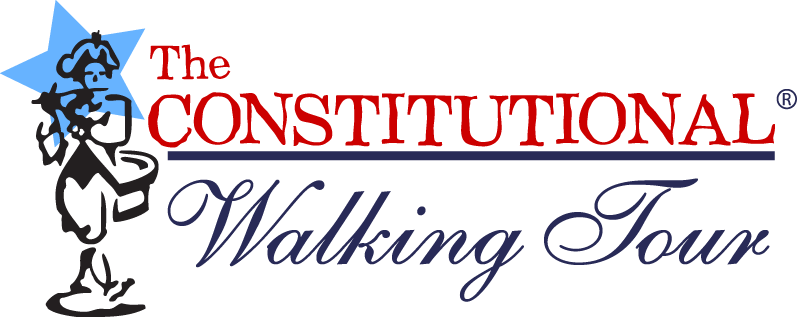Related Posts
- Buy Tickets for The Constitutional Walking Tour of Philadelphia – See 20+ Sites on a Primary Overview of Independence Park, including the Liberty Bell and Independence Hall
- Independence Hall
- Signers' Garden
- Signers' Walk
- Second Continental Congress
- University of Pennsylvania
- Pennsylvania Hospital
- Christ Church Burial Ground
Birth: December 24, 1745
Death: April 19, 1813 (age 67)
Colony: Pennsylvania
Occupation: Doctor, Professor, Author, Politician
Significance: Signed The Declaration of Independence (at the age of 30)

Childhood and Education
Dr. Benjamin Rush is a Founding Father of the United States. Rush was born in Philadelphia County in what was then the independent town of Byberry (now part of Philadelphia). Rush was one of seven children who were raised by their mother after Rush’s father died in 1754 when Rush was just five years old. A few years after his father’s death, Rush was sent to live with his uncle, Dr. Samuel Finley. Finley ran Nottingham Academy in Maryland, and he arranged for Rush to be educated there.
Following his graduation from Nottingham Academy, Rush attended the College of New Jersey (now Princeton University), and he graduated with a Bachelor of Arts degree at the youthful age of 14. Rush then returned to Philadelphia and apprenticed as a medical doctor before heading to Scotland where he earned his Doctor of Medicine degree from the University of Edinburgh in 1768 at the age of 23. Rush then returned to Philadelphia and opened a medical practice the following year.
Revolutionary War
Rush immediately had success not only as a doctor, but also as a professor. Rush was hired by the College of Philadelphia (now the University of Pennsylvania) to serve as a chemistry professor, and he published the first American chemistry textbook. Rush became a prolific writer, and a greatly respected teacher and mentor to many. Rush was quickly building influence in Philadelphia, and as the tensions regarding the British continued to rise, Rush took a strongly patriotic stance and began to use his influence to sway others to his side. Rush consulted Thomas Paine while he wrote Common Sense and became involved with the Sons of Liberty.
In 1776, Rush was elected and served in the Second Continental Congress. Rush voted for Independence, and he signed The Declaration of Independence. After signing The Declaration of Independence on August 2, 1776, Rush continued to represent Pennsylvania in the Continental Convention. During this time, Rush also accepted a job as the Surgeon General of the Middle Department of the Continental Army in 1777. Rush helped to organize and bring structure to what had been a woefully underfunded and poorly managed Army Medical Service. Rush however clashed with the other doctors who were charged with running the Army Medical Service, and Rush accused another doctor of misappropriating supplies.
During this time, Rush also became embroiled in a controversy when letters in which he criticized the performance of General George Washington were made public. For example, at that time, Washington had had little success on the battlefield in the Revolutionary War, and he had just lost the Capital city of Philadelphia. Additionally, Washington had become a target of many within in the government who looked to replace him. The controversy caused by these letters and his clashes with other doctors eventually led to Rush’s resignation from the Army in 1778. Rush would return to working as a doctor and a professor for the rest of the American Revolutionary War.
Post Revolution Career
After the Revolutionary War concluded, Rush continued his work as a physician, professor, author and mentor. Rush became a beloved mentor to many of the next generation of American leaders, eventually teaching over 3,000 children at the University of Pennsylvania (Penn) and writing over 65 publications.
As a doctor, many of Rush’s medical views have since been disproved such including his belief that blood letting was an effective treatment against many types of diseases and illnesses. Rush also worked extensively in the field of mental health. As with his medical treatments, not many of Rush’s preferred treatments of the mentally ill are held in high regard today since treatment options have greatly evolved with modern medicine. Despite this, Rush is still a very important figure in the field of mental health for the simple fact that Rush viewed people living with mental illnesses as people suffering from a curable disease. In a time when most viewed people with mental illnesses as being possessed by demons and shared the opinion that they were beyond help, Rush was a strong advocate for the idea that those living with mental illnesses could be helped and devoted much of his life trying to treat mental illnesses. Due to his contributions to the field, Rush is often called the "Father of American Psychiatry."
A professor for much of his life, Rush was a major advocate for education and aside from his long tenure teaching at Penn, Rush also founded Dickinson College, Franklin College (now Franklin and Marshall) and helped to found the College of Physicians. Rush was also an advocate for the education of women and pushed for a national public education system. Rush also served on the staff of Pennsylvania Hospital, America's first hospital, from 1783 until his death.
The Yellow Fever Epidemic of 1793
In 1793, Philadelphia was struck by one of the worst disease outbreaks in American history. The Yellow Fever epidemic killed thousands of Philadelphia citizens, wiping out an estimated 10% of the population. While most people with financial means fled Philadelphia, including most of the Federal Government since Philadelphia served as the Capital of the United States at the time, Rush stayed in Philadelphia to treat the ill. While Rush’s preferred treatment of blood letting is not believed to have done much good, his willingness to risk his own life in the service of others is a great demonstration of Rush’s priorities as a physician.
If you want to learn more about the Yellow Fever epidemic, you can join us on our Yellow Fever Tour. The Yellow Fever tour stops at many of the most important sites in Philadelphia’s history while explaining what the epidemic did to the city, and how it affected its citizens. Rush plays a prominent role in the Yellow Fever Tour.
Dr. Benjamin Rush in Philadelphia
Rush spent most of his life in the City of Philadelphia. Rush grew up in Philadelphia county and returned to live in Philadelphia after he completed his education. For many years, Rush lived in a house that once stood by the corner of 3rd and Walnut Streets where a plaque now commemorates the former location of the building. The Benjamin Rush House Site is featured on the Spirits of ’76 Ghost Tour.
The Spirits of ’76 Ghost Tour is one part history, two parts haunt! The Spirits of '76 allows visitors to see and learn about important American history, while also diving into the haunted folklore of the City of Philadelphia. The Spirits of ’76 Ghost Tour visits the site where Rush once lived and discusses the legend that some of the patients that Rush once treated still haunt the city. On the Spirits of '76 Ghost Tour, you can also learn more about the Yellow Fever Epidemic of 1793, and the gruesome way Rush tried to save lives.
Rush was elected and served as a Delegate to the Second Continental Congress. While serving as a member of the Second Continental Congress, Rush worked at Independence Hall, and he signed The Declaration of Independence. Rush also worked at the University of Pennsylvania for many years during a time when, the entire University consisted of a single building, which stood at the corner of 4th and Arch Streets. Today a plaque commemorates the University's original location. After Rush's death, he was buried at Christ Church Burial Ground in Philadelphia.
A plaque commemorating Rush for signing The Declaration of Independence can be found on Signers' Walk on the 600 block of Chestnut Street (between 5th and 6th Street). Signers' Garden pays tribute to the Founding Fathers, including those such as Rush who signed The Declaration of Independence. Today, Independence Hall, Christ Church Burial Ground, The University of Pennsylvania Plaque, Signers' Walk and Signers' Garden are all stops visited along The Constitutional Walking Tour!




